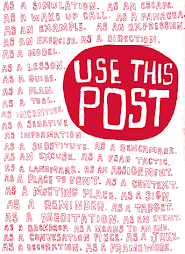 Seecantrill (@Seecantrill) Seecantrill (@Seecantrill)2/11/13 6:11 AM "The district’s best educators were asked to design a curriculum based on evidence, not hunch"nytimes.com/2013/02/10/opi… #nwp #philofounded |
Cognitive and noncognitive, thinking and feeling; here, this line vanishes. The good teacher is always on the lookout for both kinds of lessons, always aiming to reach both head and heart. “My goal is to do for these kids what I do with my own children,” the teacher, Susana Rojas, tells me. “It’s all about exposure to concepts — wide, na
rrow, long, short. I bring in breads from different countries. ‘Let’s do a pie chart showing which one you liked the best.’ I don’t ask them to memorize 1, 2, 3 — I could teach a monkey to count.”A quarter-century ago, fear of a state takeover catalyzed a transformation. The district’s best educators were asked to design a curriculum based on evidence, not hunch. Learning by doing replaced learning by rote. Kids who came to school speaking only Spanish became truly bilingual, taught how to read and write in their native tongue before tackling English. Parents were enlisted in the cause. Teachers were urged to work together, the superstars mentoring the stragglers and coaches recruited to add expertise. Principals were expected to become educational leaders, not just disciplinarians and paper-shufflers.
 Ivan Illich (@IvanIllich2)
Ivan Illich (@IvanIllich2)2/11/13 6:14 AM
If you want to change society then you must tell an alternative story.
 John Robinson (@21stprincipal) John Robinson (@21stprincipal)2/11/13 6:14 AM The 21st Century Principal: Educational Blogging Is About "Earning Your Readers Attention" bit.ly/X2flMo#edchat #ncadmin |
in providing any kind of web content for others to consume. Content is important. In the end, we have no choice but do what Handley and Chapman suggest: "we have to earn the attention of people," and that is done by providing them with the kinds of content they are looking for. That maxim is true for those who are educational bloggers too.
perhaps most are looking for - interconnectedness..
how that looks feels.. everyday
 Saul Kaplan (@skap5)
Saul Kaplan (@skap5)2/11/13 6:15 AM
Odd that analysts don't include tablets and smart phones in the PC market since mobile has put the personal into computing.
like... odd that Ed doesn't include.. personal thinking..
 Anya Kamenetz (@anya1anya)
Anya Kamenetz (@anya1anya)2/11/13 6:17 AM
#FCMostInnovative list is out!!!
fastcompany.com/section/most-
2/11/13 6:18 AM New Post: Video Games and Social Emotional Learningwp.me/pKlio-18K #gbl |
graphic fits perfectly with 1-2-2
greg hill - bravo man...
Efficiency as cul-de-sacInstead of the smart city, perhaps we should be more preoccupied with smart citizens. The smart city vision tends to focus on infrastructure, buildings, vehicles, looking for a client amidst the city governments that procure or plan such things. But the city is something else. The city is its people. We don’t make cities in order to make buildings and infrastructure. We make cities in order to come together, to create wealth, culture, more people. As social animals, we create the city to be with other people, to work, live, play. Buildings, vehicles and infrastructure are mere enablers, not drivers. They are a side-effect, a by-product, of people and culture. Of choosing the city.The smart city vision, however, is focused on these second order outcomes, and often with one overriding motivation: efficiency. Yet the city’s primary raison d’être is to be found amidst its citizens. If we look there, we find that there is more, much more, to urban life than efficiency. In fact, many of those primary drivers are intrinsically inefficient, or at least at a tangent to the entire idea of efficiency. Can a city be “smart” and inefficient at the same time? Perhaps this is a fundamental question, un-voiced by smart city advocates.
_____________
thinking we need spaces that aren't
- a gathering of same aged people only
- spaces of compulsion
- spaces of proof
thinking spaces need to be
- 100% permission to experiment
- 100% time




































